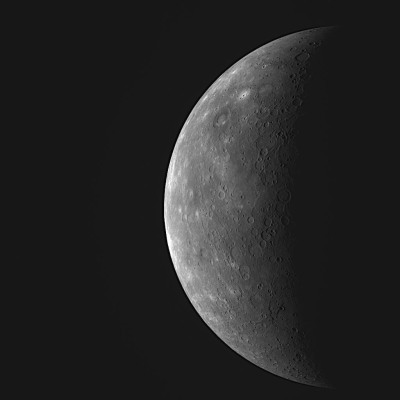EXPLORE: Life Outside of Earth (BrainPop)
| Site: | Mountain Heights Academy OER |
| Course: | Earth Science Q1 |
| Book: | EXPLORE: Life Outside of Earth (BrainPop) |
| Printed by: | Guest user |
| Date: | Saturday, 26 July 2025, 2:38 PM |
Description
Life in our solar system and beyond
1. VIEW: Life in Our Solar System & Beyond
This screencast focuses on the possibilities for life to exist on other planets in our solar system and the universe as a whole. It is hypothesized that life may have once existed on Mars, and therefore, maybe can in the future as well. While it is believed that life (as we know it) could not exist on Jupiter or Saturn, two of their moons - Europa and Titan - are thought to have potential for life to exist because of the presence of carbon and possibly water ice.
2. Life Outside of Earth (BrainPop)
SETI looks for extraterrestrial life throughout our universe. It looks for radio signals that might have been sent out by intelligent beings on other planets. More than 500 extrasolar planets (planets outside of our solar system) have been found by astronomers; but not extraterrestrial life has been discovered yet.
3. VIEW: Searching for Life
Remote sensing technology (for example, satellites and telescopes) have helped scientiests in their search for life on distant planets. Telescopes measure how these planets reflect the light and heat of their stars, which informs them of the atmospheric composition of that planet. This information can tell scientists about the "fingerprints" or specific chemicals that make up the planet's atmosphere and whether or not the ones that could potentially support life are present.
But scientists also consider the atmospheric makeup of supports types of life that existed in Earth's past. For example, scientists believe hat Earth's atmosphere originally did not include oxygen for the first 2 billion years or so. In fact, the gases that made up Earth's early atmosphere - carbon dioxide and ammonia compounds that came from ancient volcanic eruptions - would not support life as we know it today. Earth's atmosphere evolved to include oxygen and an ozone layer, making our planet suitable for life as we know it. This shows that atmospheric oxygen is not the only ingredient necessary for life. Carbon is generally thought of as the most fundamental element for life. Carbon is the basis for proteins and amino acids, life's building blocks.
Knowledge about the diverse settings and extreme environments in which life exists on Earth guides scientists in their search for where life might exist elsewhere in our solar system.
4. READ: Inner Planets' Atmospheres
One thing that can determine whether or not a planet is habitable is its atmosphere. The correct composition of gases is necessary to support life.
Each of the planets in the solar system are unique. Learn more about each planet's atmosphere below:
Mercury
Mercury has no atmosphere because it is so close to the Sun. As a result, heat from the Sun hits the surface of Mercury without any resistance. Because there is no atmosphere the temperatures vary widely each day. At its high point Mercury can reach 430 degrees Celsius and at night it drop to -180 degrees Celsius.
Venus
Venus, in contrast to Mars, has a very thick atmosphere. The clouds are made of sulpheric acid. The thick clouds cause a "greenhouse effect" (much greater than Earth's greenhouse effect), which causes temperatures that are hot enough to melt lead. Venus also has lightning, similar to lightning on Earth.
Earth
As far as anyone knows, Earth is the only planet with life. Earth has an atmosphere that is not too dense, or too thick. It is made up of 78% nitrogen, 21% oxygen and 1% of other kinds of gases. Earth's atmosphere is dense enough to protect us from meteors and some radiation from the Sun.
Mars
Mars does have an atmosphere, but it is 100 times less dense than Earth. Because of the thin atmosphere, temperatures can vary widely: from -125 degrees Celsius to 20 degrees Celsius. Despite these harsh conditions, scientists believe that Mars once had liquid water, just like Earth.
Sources
http://cnx.org/content/m20541/latest/ (CC BY)
http://solarsystem.nasa.gov/planets/profile.cfm?Object=Mercury&Display=OverviewLong (Public domain)
http://solarsystem.nasa.gov/planets/profile.cfm?Object=Venus&Display=OverviewLong (Public domain)
http://solarsystem.nasa.gov/planets/profile.cfm?Object=Earth&Display=OverviewLong (Public domain)
5. READ: Outer Planets' Atmospheres

The atmosphere of the outer planets tend to be colder than the inner planets. The following is some more information on each of the outer planets.
Jupiter
Since Jupiter is a gas giant, almost all of its matter is gas. More specifically, Jupiter's clouds are made of ammonia. Strong winds cause the stripes that stretch across the planet. The Great Red Spot is actually a giant storm that is larger than Earth itself.
Saturn
Saturn's atmosphere is mostly made up hydrogen and helium. The temperature is very low: around -170 degrees Celsius. Like Jupiter, Saturn has very strong winds (up to 500 feet per second).
Uranus
Uranus's atmosphere is mostly made up of hydrogen and helium. The atmosphere also contains methane and small amounts of water and ammonia. The blue-green color of Uranus comes from the methane gas.
Neptune
Neptune's atmosphere also has methane. However, Neptune is a darker than Uranus and scientists are not sure why. The atmosphere goes very deep and doesn't end sharply like Earth's. Instead, it gradually mixes with water and ice-like matter until it reaches the solid core.
Sources
http://solarsystem.nasa.gov/planets/profile.cfm?Object=Jupiter&Display=OverviewLong (Public domain)
http://solarsystem.nasa.gov/planets/profile.cfm?Object=Saturn&Display=OverviewLong (Public domain)
http://solarsystem.nasa.gov/planets/profile.cfm?Object=Uranus&Display=OverviewLong (Public domain.)
http://solarsystem.nasa.gov/planets/profile.cfm?Object=Neptune&Display=OverviewLong (Public domain.)
